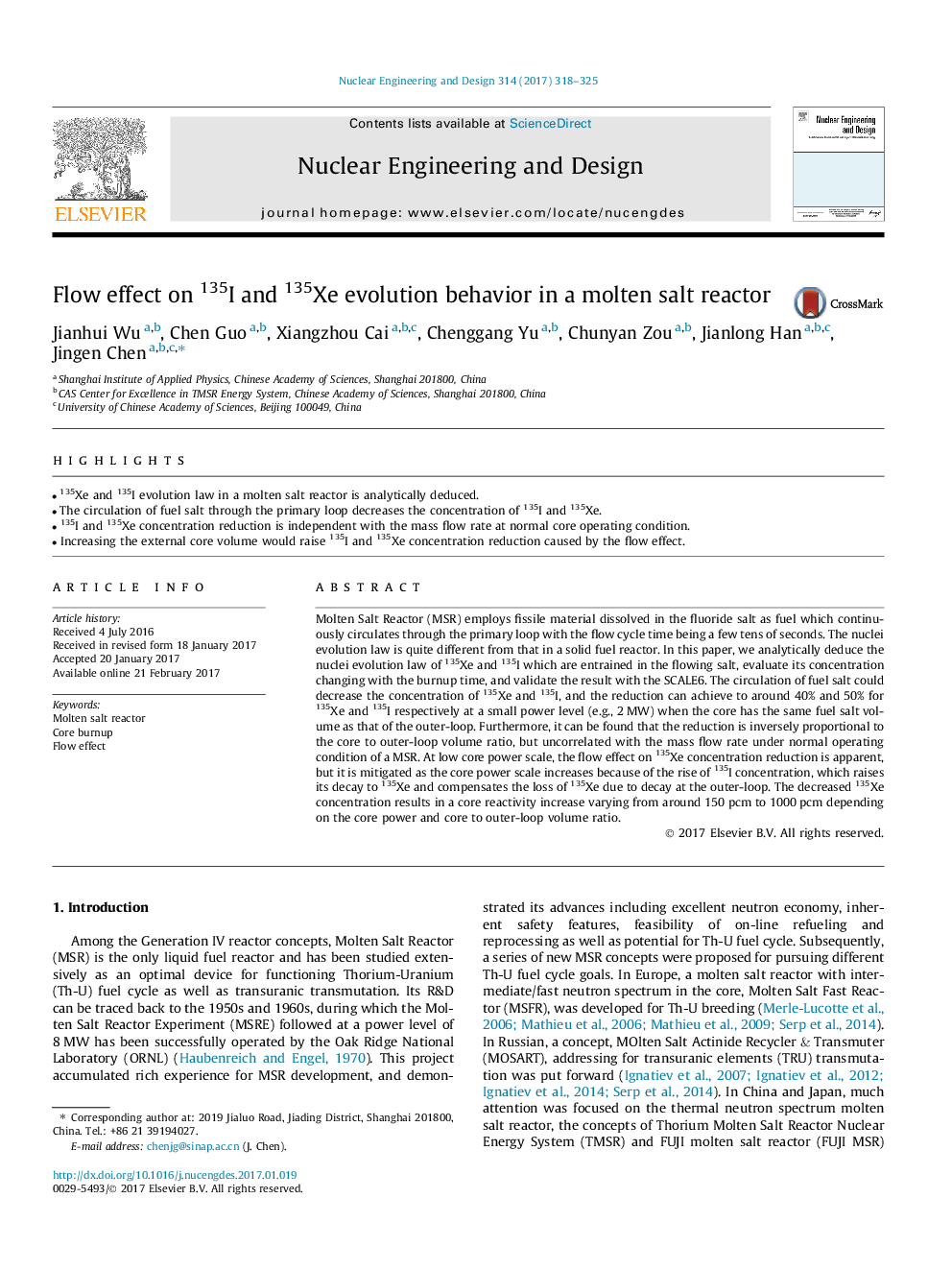| Article ID | Journal | Published Year | Pages | File Type |
|---|---|---|---|---|
| 4925698 | Nuclear Engineering and Design | 2017 | 8 Pages |
Abstract
Molten Salt Reactor (MSR) employs fissile material dissolved in the fluoride salt as fuel which continuously circulates through the primary loop with the flow cycle time being a few tens of seconds. The nuclei evolution law is quite different from that in a solid fuel reactor. In this paper, we analytically deduce the nuclei evolution law of 135Xe and 135I which are entrained in the flowing salt, evaluate its concentration changing with the burnup time, and validate the result with the SCALE6. The circulation of fuel salt could decrease the concentration of 135Xe and 135I, and the reduction can achieve to around 40% and 50% for 135Xe and 135I respectively at a small power level (e.g., 2Â MW) when the core has the same fuel salt volume as that of the outer-loop. Furthermore, it can be found that the reduction is inversely proportional to the core to outer-loop volume ratio, but uncorrelated with the mass flow rate under normal operating condition of a MSR. At low core power scale, the flow effect on 135Xe concentration reduction is apparent, but it is mitigated as the core power scale increases because of the rise of 135I concentration, which raises its decay to 135Xe and compensates the loss of 135Xe due to decay at the outer-loop. The decreased 135Xe concentration results in a core reactivity increase varying from around 150Â pcm to 1000Â pcm depending on the core power and core to outer-loop volume ratio.
Keywords
Related Topics
Physical Sciences and Engineering
Energy
Energy Engineering and Power Technology
Authors
Jianhui Wu, Chen Guo, Xiangzhou Cai, Chenggang Yu, Chunyan Zou, Jianlong Han, Jingen Chen,
